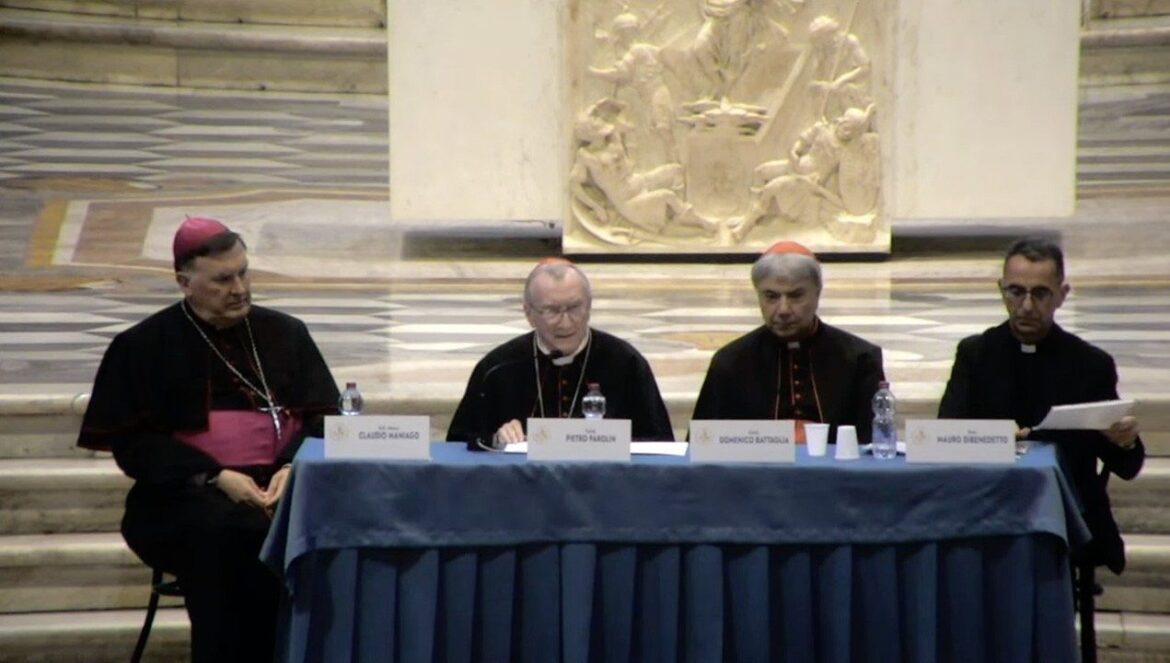
At the opening of the 75th National Liturgical Week in Naples, Cardinal Secretary of State Pietro Parolin reflects on how the liturgy embodies the Jubilee Year’s central theme of hope, interwoven with faith and charity.
By Benedetta Capelli
At the Cathedral in the Italian city of Naples on 25 August, Cardinal Pietro Parolin, Vatican Secretary of State, addressed participants at the opening of the 75th National Liturgical Week.
His reflection, entitled “The liturgy nourishes and sustains hope,” framed the days ahead, during which some 500 scholars and liturgists will explore the theme: “You are our hope. Liturgy: from contemplation to action.”
Hope, contemplation, action, peace
Hope, contemplation, action, and peace: These four words capture the heart of Cardinal Parolin’s reflection.
He reminded listeners that faith in Christ—“our hope,” as proclaimed in the Te Deum—and the Jubilee itself are “realities that we celebrate and live in the liturgy.”
For those burdened by fatigue, fragility, and sin, he said, the liturgy becomes the place where one can abandon oneself to God’s love and mercy.
Nourishment for faith and love
For the liturgy to truly feed faith and hope, he continued, we must “experience God in the celebration,” training our hearts in His presence through contemplation.
Contemplation, he explained, is not simply “feeding the eyes,” but a deep inner encounter with God that leads outward to the Other. It is “the attitude of recognizing God’s gift in the liturgy—the Paschal Mystery of Christ—present in the sacraments, above all in the Eucharist, in the Word, in the minister, and in the assembly.”
The invitation is to discover “the beauty of the liturgy,” the beauty of God’s saving love revealed in Christ’s death and resurrection, as Pope Francis highlights in Evangelii gaudium.
Seekers of God
Contemplation stirs wonder, Parolin said, “allowing ourselves to be nourished by the hope that comes from the Mystery we celebrate.” This fuels the spiritual life, opening arms to receive the gift.
But for this to happen, liturgy must be inclusive: capable of sparking wonder in children and young people, adults and the elderly, people with disabilities, and migrants—in all who hunger for God and His love.
In this way, liturgy becomes both a sign of humanity’s hope in God and a sign of hope for the Church, which still counts many “seekers of God.”
Weaving life and liturgy
“The liturgy lifts our eyes to heaven, but always within the concreteness of life,” the Cardinal noted. Only when ritual and life are joined together does celebration become a source of hope.
Linking liturgy and life, contemplation and action, makes us “craftsmen of unity.” Holding together sacramentality and humanity, he said, enables us to respond to those who ask the reason for the hope within us.
A sign of hope and refuge
Cardinal Parolin stressed that the liturgy must increasingly become a “place” of closeness, hope, freedom, hospitality, and refuge. Sometimes, he said, it is the only truly welcoming place, uniting rather than dividing, where people recognize themselves as a community.
He pointed to the Holy Family parish in Gaza City, hit by bombings on July 17 in which three people died, yet which remains “one of the rare—if not the only—signs of hope in that devastated land.”
Around 500 Christians pray and find shelter there in the house of God. “The house of prayer,” he said, “becomes a dwelling and refuge for God’s people and for all who are persecuted or oppressed—a sign of sure hope.”
Hunger for God
The Cardinal also called for a liturgy that is “inclusive, intercultural, and welcoming” in today’s increasingly multicultural Italian parishes—a liturgy that is the fullest expression of “synodality.”
He recalled the many people who have reached Italian cities from other continents, travelling the routes of hope but often facing journeys that became real via crucis, where prayer for salvation remained constant.
The Cardinal called for attention not only to their material needs but also to their thirst for spirituality and their hunger for hope, which springs from their faith in God.
The gift of peace
“The essence of the liturgy is peace,” Cardinal Parolin affirmed, “the gift of the Risen Christ. It is not just a symbol but authentic peace, true communion.”
This peace is the fruit of the celebration and “is already experienced within it, spreading out to the whole world – and we are its first bearers.” If the liturgy is celebrated with inner truth, he concluded, we become witnesses of hope and peace.
“It would be beautiful,” he added, “if at the entrance of every church one could read: ‘Be nourished by hope, you who enter here.’ For hope is Christ Himself, alive and active in the liturgy.”

